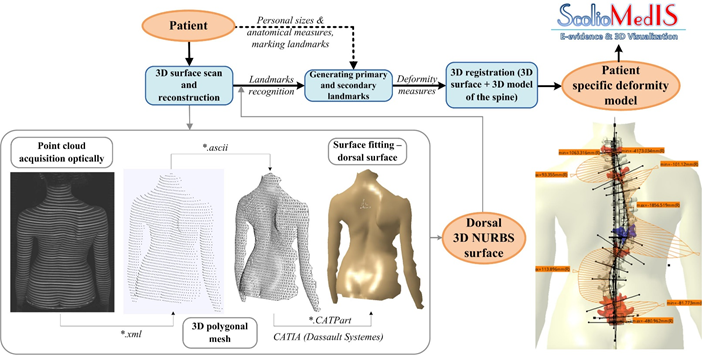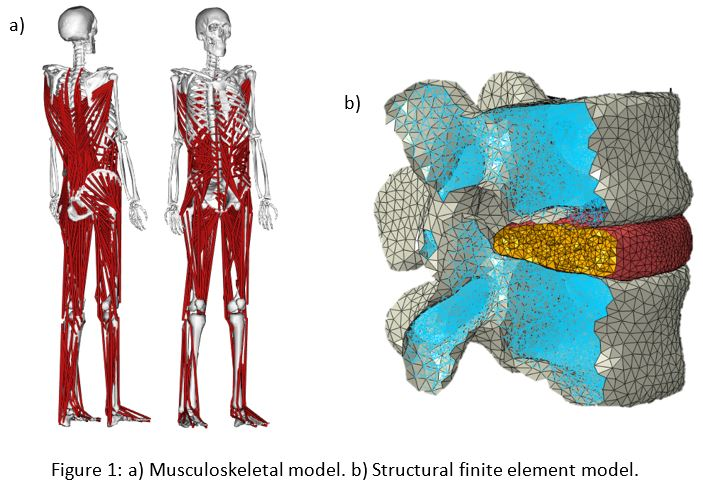Abstract
Introduction
Adolescent Idiopathic Scoliosis (AIS) is a structural spinal deformity in the coronal plane that affects 1-3% of children in the United States [1]. The treatment of AIS depends on the severity and may include observation, bracing, surgery, physical therapy, chiropractic treatment and electrical stimulation. A scoliotic angle less than 10º [2], kyphotic angle within the range of 20-40º, and/or lydotic angle within the range of 20-60º [3] is classed as normal. Outside of this range observation and/or intervention may be required. The purpose of this study is to evaluate a 3D raster stereographic measurement technique for assessing before and after scoliosis surgery.
Methods
A 15-year-old girl who had not had any surgical intervention presented with AIS (which had been observed for 6 months). Raster stereographic analysis was conducted on her prior to surgery and following scoliotic correction surgery. The angles computed included the scoliotic angle (coronal plane), thoracic kyphotic angle and lumbar lordotic angle (both in the sagittal plane).
Results
Prior to surgery the patient exhibited a scoliotic angle of 45° (classed as severe), and kyphotic and lordotic angles of 34° (classed as normal). Following surgery the patient exhibited a reduced scoliotic angle of 13° (classed as mild), kyphotic angle of 37° and lordotic angle of 26°, both remaining in the normal range.


Figure 1: Coronal view of spinal orientation prior to surgery (left) and following surgical correction (right).
Discussion
Following surgery the scoliotic angle was reduced to 13°, now classed as mild scoliosis. While the kyphotic and lordotic angles also changed, though they remained in the normal range. This suggests surgeons should pay attention to the 3D modifications in the sagittal plane when intervening in the coronal plane to correct scoliosis. This is best revealed using raster stereography. However, raster stereography is not common in the clinic, but prior studies have shown that it is correlated to standard 2D radiography (>0.7) [4], which is known as the classic Cobb angle. This technique is non-invasive, portable and may play a role in accurately assessing surgery outcomes in the clinic.
References
- Soucacos P N et al., Orthopedics, 23(8):833, 2000.
- Kondrad E Bloch et al. ERS Handbook: self-assessment in respiratory medicine: page 460, 2015.
- Bernhardt M et al. Spine, 14(7): 717-721, 1989.
- Frerich J M et al., Open Orthopaedics Journal, 6(1):261-265, 2012.




 References:
References:

 Discussion
Discussion













 Discussion
Discussion